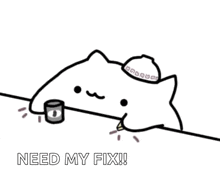AuDHD Part II, Traits that Tick the Boxes
Each person’s experience with a diagnosis is going to be as unique as the individual and when it comes to ADHD, this is exceptionally true. Although diagnosis gave me an answer and a sense of relief, it also caused me confusion when I was presented with common challenges that ADHD folks experience. I was diagnosed after the age of 40, which means I had over three decades to build out coping mechanisms, accommodations/work arounds or simply battled an ADHD tendency into surrender. These are the traits that I neatly fit into the box when someone imagines ADHD:
Folks with ADHD are distracted easily.
Before discovering noise-cancelling headphones, I struggled with distractions, especially due to my ADHD. My constant playlist, a “controlled distraction,” was a necessary coping mechanism. However, in 2005, the challenge peaked when my inability to focus on traffic lights, exacerbated by my kids’ chatter in the car, highlighted the need for medication. This realization marked a turning point in managing my ADHD for everyone’s safety and well-being. Many who may not understand why you might need medication to help you focus, seem to understand it more when they realize that I had times where I couldn’t tell you what color an upcoming traffic light was due to an inability to focus when there were minor distractions.
There are some days where I’m quite distracted and it feels like someone is following me around, raking their nails down a chalkboard. I’m unable to concentrate and it’s important for me to be kind to myself and know that I will have another day where I more than make up for it and get 4 days of work done in one, helping to balance out when a day of distraction is upon me.
Your brain runs like a motor on full-throttle.
My mind is always active, tackling work issues from dawn to dusk and mulling over friends’ problems. To avoid boredom-induced anxiety, I immerse myself in diverse hobbies like kayaking, Lego building, gardening, pet care, RV restoration, boating, STEM activities, and volunteering. I handle heavy workloads to maintain high temporal lobe activity, crucial for dopamine levels, which is vital for those with ADHD like me.
ADHD enables unique multitasking abilities. Rather than traditional multitasking, I juggle physical tasks while mentally processing multiple “channels” – solving problems, replaying conversations, and enjoying my mental music playlist. This ability often leads to seemingly unrelated conversational jumps, but rest assured, it’s all connected in my brain.
I view my multi-channel brain as both a superpower and a challenge. While different from neurotypical brains, I recognize this trait in others with ADHD. Despite envying the single-channel brain’s focus and quieter nights, my multi-channel mind is like a fast-food restaurant with multiple drive-thrus, absorbing vast information simultaneously. In meetings or social settings, I can astutely observe and interpret micro-expressions, vocal tones, body language, and more, making me extremely perceptive – almost like a combination of a mentalist and a super-powered individual.
My skills are geared towards solving complex technical issues and seeing the overall picture rather than focusing on minute details. Partnering me with someone who excels in delving deep into specific problems will create an unstoppable team. While I quickly lose interest after identifying and initially fixing an issue, a detail-oriented colleague can handle the final touches. I thrive in roles involving communication and problem-solving, both technical and personal. Let me lead in tackling broad challenges, and have a detail-focused individual handle the final 5% of the work, especially tasks that don’t require interaction. I’ll fiercely support and safeguard such teammates, recognizing their crucial role and the value of strong teamwork.
Next post I’ll dig into ADHD symptoms that I have overcome and don’t fit neatly into the ADHD box.
If you have ADHD, you have hyperactivity.
Hyperactivity is one of those things that I don’t think most understand. They recognize physical outlets for hyperactivity, such as an inability to sit still, tapping ones feet or climbing on objects. Most don’t realize that hyperactivity is really a loss of self control and that it can manifest itself in various ways not easily recognizable.
- Fiddling with objects around them- seems unable to stop themselves from impulsively touching or fiddling with things around them.
- Moving feet, hands or fingers constantly.
- Itching, picking at skin, bothered by tags and seams in clothes
- Doodling/ripping paper or other physical activity that doesn’t require movement from current position such as sitting.
- Speaking fast, interrupting other people or conversations
- Snapping gum, flicking of fingers, spinning of jewelry
- Emotional responses-anger, crying, shouting, even though they don’t feel emotions to go with their emotional reaction.
- Responds impulsively to highly stressed/sensitive situations or the reverse- may shut down.
Without my ADHD medication, I exhibit restless behaviors like incessantly bouncing my foot or rapidly speaking. I compulsively doodle and become irritated by clothing tags and seams, often fidgeting with any electronics or gadgets nearby.
Before starting ADHD medication, I was aware that I could become emotionally overwhelmed and it had always been confusing for me. I would inexplicably cry without feeling sad or stressed. In confrontational situations, I would remain silent and detached, only processing my thoughts later in a quiet environment. Medication has given me the self-control over my hyperactivity, resulting in strong emotional regulation and response to stress, even if just to request time for thoughtful consideration in tense moments.
Next post I’ll take on the challenges that many with ADHD or AuDHD often have that I either don’t or the solution I found to keep from having difficulty.
Until then, drink good coffee and take good backups!

